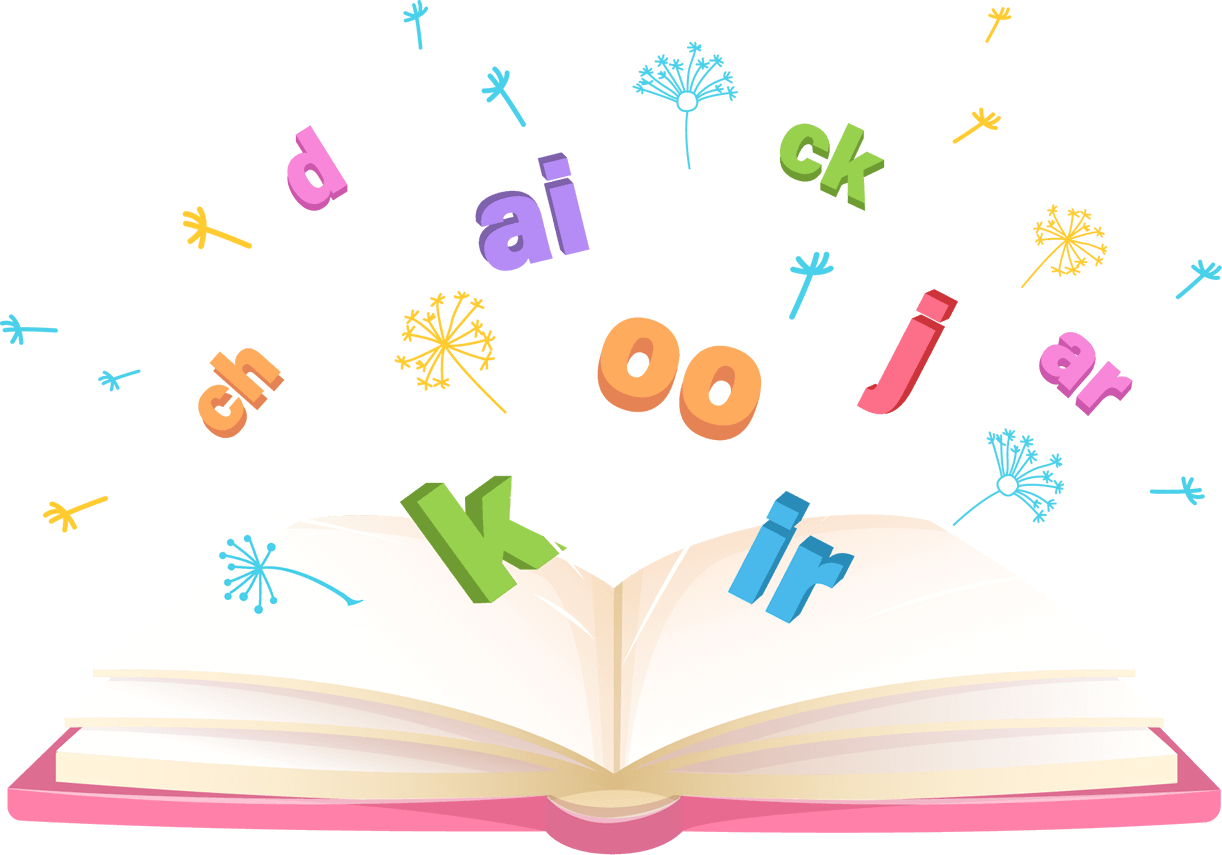Phonics Phases Overview
Phonics Phase 1
Skill Development
Phase 1 Phonics lays the foundation for children's reading and spelling journey through fun activities. By engaging in listening games, singing, and sound-making activities, children develop sound recognition and manipulation skills, fostering a love for language and preparing them for future learning.
Phonics Phase 2
Introducing the First Letters
Phase 2 Phonics introduces children to letters and their corresponding sounds, paving the way for blending sounds and reading simple words and sentences. Through our online games and resources, they'll encounter phonemes and graphemes in a playful manner, ensuring a positive early reading experience.
Phonics Phase 3
Expansion
Phase 3 Phonics expands on previous learning with more graphemes and phonemes, including digraphs and trigraphs. Children explore a wider range of words and delve into complex phonics principles. Our platform offers activities and games, making mastery of these new skills enjoyable and effective.
Phonics Phase 4
Consolidation
Phase 4 Phonics consolidates learning as children diligently practise blending and segmenting in longer words. Introduction to adjacent consonants and polysyllabic words expands reading and spelling. Our resources ensure ample practice, fostering confidence in readers and spellers.
Phonics Phase 5
Further Development
Phase 5 Phonics introduces new graphemes for reading and spelling, along with alternative spellings and pronunciations for known elements, enriching children's phonics understanding. Our games make navigating these concepts enjoyable, supporting deeper phonetic comprehension.
Phonics Phase 6
Achieving Fluency
Phase 6 Phonics nurtures fluent readers and accurate spellers by exploring spelling rules, prefixes, and suffixes. It enhances literacy, comprehension, and writing skills. Our platform provides diverse activities, ensuring a solid literacy foundation in this final, crucial phonics phase.
Why Phonics?
What is Phonics
Phonics teaches the correlation between letters and sounds, enabling children to decode words by sound, thus establishing a crucial foundation for reading and writing proficiency.
Benefits
Phonics enhances reading and writing by teaching sound-letter relationships, aiding in word decoding and spelling. It cultivates a solid literacy foundation for long-term academic success.
Learning process
In phonics, children associate individual letters with sounds to read words. They move from simple to complex words, enhancing literacy step by step, fostering a love for reading.
How it helps
Phonics fosters automatic word recognition by teaching the letter-sound connection. This skill boosts confidence in young learners and significantly improves academic performance.



